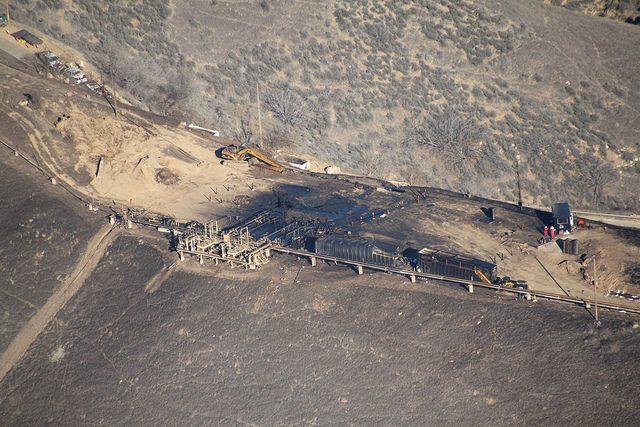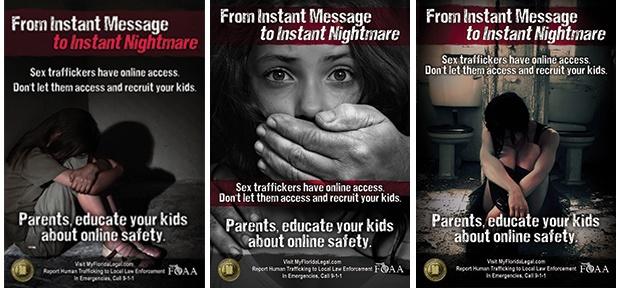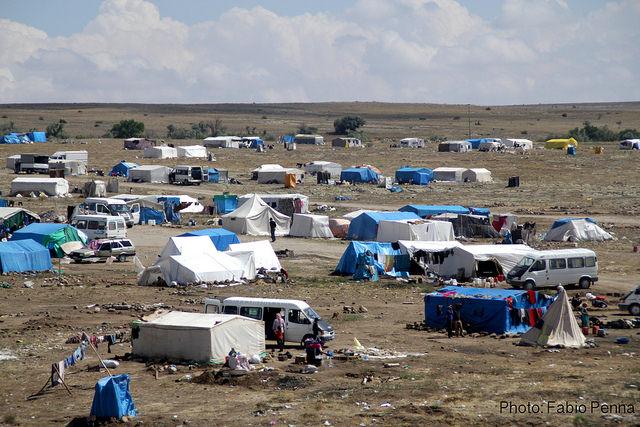Travel company books Fair Trade holiday of a lifetime


Sumak Travel, the UK based social enterprise that specialises in Latin American ecotourism, has partnered with the Cafédirect Producers’ Foundation (CPF) to launch a range of Fair Trade Adventures in Colombia, Costa Rica and Peru.
Four new small group tours will give travellers a rare opportunity to meet farmers and artisans behind popular fair trade products such as coffee, chocolate and handicrafts, while also visiting some of Latin America’s most iconic sights and natural wonders.
"As one of the best-loved fair trade brands, many people will already be familiar with Cafédirect. But now, for the first time, they will have the opportunity to meet some of the coffee and cocoa growing communities behind the brand," said Felipe Zalamea, director at Sumak Travel.
"Homestays, and opportunities to get hands-on with everything from fishing for their own lunch to mixing Peru's infamous Pisco sours, mean that travellers will really immerse themselves in the local culture and feel like a special guest of their host community, rather than a tourist."
Download the brochure here.
"For us responsible travel isn't just about minimising the negative impacts of tourism, it's about creating rewarding travel experiences that have a positive impact for local people and the environment," added Sumak Travel's Zalamea.
"As well as creating unforgettable trips for our customers, we've designed the Fair Trade Adventures to be small-scale and low impact, so that the farmers, artisans, indigenous peoples, social entrepreneurs and others who act as our hosts, can continue to enjoy their traditional way of life while earning a complementary income."
Top picture: Lake Titicaca, Peru - Harry Dowdney
3p Weekend: The Silicon Valley You Won't See on Postcards


Thanks to the influx of large tech companies, the San Francisco Bay Area has ballooned in both wealth and population over the past two decades. But the picture isn't always as pretty as those postcards of the Golden Gate Bridge.
As companies continue to pressure Bay Area communities to build new office parks, they often fail to lobby for housing and transportation options to go along with them, placing a strain on local infrastructure. Additionally, more highly-paid residents means more shops, restaurants and trendy coffee bars — all staffed by employees who are quickly being priced out of the area.
This perfect storm creates a heap of problems for Bay Area residents — as well as significant opportunities for government and the private sector to collaborate on solutions. In a recent series, TriplePundit took a closer look at living, working and commuting in the Bay Area, how tech companies impact residents, and what these firms can do to ensure the long-term sustainability of the region.
Getting around the Bay Area in the age of Tech Titans
The region's population has grown by 200,000 since 2010, and another 2 million are expected by 2040. But its transport systems – highways, buses, Bay Area Rapid Transit (BART) and Caltrain – are already reaching peak capacity. As highways slow to a standstill during rush hour, more public transit is needed to pick up the slack. But the fact that public transportation systems are operated by an astounding 27 different transit agencies across the nine counties that make up the Bay Area makes a growth plan difficult to devise, experts told TriplePundit.
“When you have 27 separate transit agencies, it is impossible to get coherent transportation planning that will operate on a complete Bay Area basis,” Gerry Tierney, an urban mobility expert at Perkins + Will’s San Francisco office, told 3p's Nithin Coca. “We have a 19th-century political structure trying to address 21st-century problems.”
Tech employees who choose city life over their far-flung office parks can hitch a ride to work on company-provided shuttles (commonly dubbed 'Google buses,' although other big tech firms like Facebook, Apple and Yahoo use them, too). Communities argued that this wasn't enough to ease the burden on highways and public transit, and the fact that tech shuttles utilize public bus stops did little to ease the tension -- spawning protests and lawsuits across the region, 3p correspondent Nayelli Gonzalez reported.
Fortunately, after years of outcry, big tech companies are beginning to rise to the occasion. Facebook has said it will put in $1 million to fund a Caltrain extension to the Dumbarton bridge, which would put a station closer to its headquarters in Menlo Park. Google is working with Mountain View to build more housing, including low-income housing, around its Mountain View campus. And LinkedIn has said it will implement a plan to reduce single-occupancy vehicles at its headquarters, pushing more of its employees to either take transit or carpool to work. But, as 3p correspondent Nithin Coca pointed out, this is only the beginning of what will likely be a long road ahead.
As rent prices skyrocket, can residents keep up?
Housing prices are hitting peak insanity across the Bay Area. The average one-bedroom apartment will set a renter back a whopping $2,965. "To maintain an apartment at this rate, an individual working minimum wage in San Francisco at $12.25 per hour would need to work over 60 hours per week just to cover the monthly rent — not including having enough cash left over for utilities, food, transportation or any other basic needs," wrote 3p correspondent Sherrell Dorsey.
And, as 3p Editor-in-Chief Jen Boynton pointed out in a recent op/ed: Even high-income earners like lawyers, engineers and nonprofit directors can basically forget about owning a home unless they want to go work for a big tech firm: The median home value right now in Mountain View -- a safe-but-boring suburb -- is $1.4 million.
This leaves many residents doubling or tripling up with other families in small apartments to make ends meet. For some, even this is not an option, as evident by the rise in chronic homelessness. Local agencies are finally beginning to move on increasing affordable housing, but they are often met with resistance. “There’s not enough political will to build,” Sonya Trauss, founder of the San Francisco Bay Area Renters Federation, told 3p's Jan Lee. “Suburbs have the idea that housing doesn’t pay.”
If you ask local advocates, tech companies -- which are the main draw for hundreds of thousands moving into the Bay Area -- could do much more to ensure there's enough housing to go around. “They should engage positively with local government and advocates to find shared solutions, rather than just finding ways to work around local ordinances or throwing tons of money at ballot measures they don’t like,” Gloria Bruce, executive director for the East Bay Housing Organizations (EBHO), which advocates for improved housing options in places like Oakland, told Lee.
Can the gig economy bring relief?
The burgeoning ‘gig economy,’ comprised of companies such as Uber, Lyft, Airbnb, TaskRabbit and Handy, connects people with 'gigs' -- or on-demand, flexible, freelance employment -- that can help them earn extra cash or, in many cases, provide the sole means of employment for someone looking for work. The gig economy isn't unique to the Bay Area, but as a tech startup hub home to millions who are just scraping by, gig employment is obviously a highly popular option.
But gig economy employers have come under scrutiny for not offering benefits or forming concrete policies that ensure worker security, and the jury is still out on whether the concept is good for workers. In the end, it's unlikely that the gig economy will provide the silver bullet the Bay Area needs to keep low- to middle-income residents afloat. As former gig economy darling HomeJoy shut its doors and analysts fear many of its peers may be overvalued, the sector itself could very well be on life support. It's time to start looking at alternatives.
Taking on the macro issues
The Bay Area has its fair share of local issues clamoring for attention. But the same macro issues at play in the rest of the world -- such as climate change and racial inequality -- are also coming to the fore in the City by the Bay.
Some of the region's wealthiest neighborhoods are threatened with property loss due to sea-level rise, leaving many to wonder what role local business has to play. Within their own walls, large tech firms in the Bay Area must acknowledge a glaring lack of workplace diversity and devise solutions for how to move forward.
Although both macro and micro issues present significant problems for tech companies looking to operate responsibly, a sustainable way forward is possible, as 3p correspondent Nayelli Gonzalez summarized in the final post in our series, What it Means to be a Responsible Tech Company.
Did you miss any of the stories in our Tech Titans series? You can read them all here.
Image credit: Flickr/Patrick Nouhailler
TransCanada Files Suit Over Keystone XL: Does It Have Merit?


This week TransCanada announced that it will seek damages against the Obama administration under the North American Free Trade Agreement for blocking the construction of the Keystone XL pipeline. This raises a crucial question: Does a nation (and its constituency for that matter) have the right to decide whether to block industry from crossing its border to do something that will appreciably increase the country's carbon emissions?
And, just as importantly, does a federal agency have the right to change its policies with international business interests based on evolving climate change research?
On Wednesday, Canada's leading energy company said it planned to file two lawsuits against the Obama administration. Under NAFTA, it would seek $15 billion in damages for what it called "arbitrary unjustified" actions that it alleges were based on political motives.
It also filed a lawsuit in U.S. federal court in Houston alleging that the administration overstepped its constitutional powers when it denied TransCanada's application to construct its pipeline on U.S. soil.
The Calgary-based corporation says it has lost billions from the federal government's rejection of Keystone XL, and expects see losses in the fourth quarter specifically due to the rejection of the project.
“TransCanada has invested billions of dollars in assets that have now been rendered useless for the intended purpose, specifically the transportation of Canadian and American oil,” the company said.
According to a company statement regarding the lawsuits, the U.S. State Department "acknowledged" in its decision that "the denial was not based on the merits of the project." The company asserts that the decision was, instead, a "symbolic gesture based on speculation about the perceptions of the international community regarding the administration's leadership on climate change and the president's assertion of unprecedented, independent powers."
The loss of the Keystone project, however, isn't the only financial woe the corporation has experienced in recent years. A Globe and Mail article published in September 2015 (prior to the U.S. administration's formal announcement of its plan to reject the pipeline's construction) notes that TransCanada was already feeling the pinch from slowing oil and gas markets.
Reporter Allison McNeeley noted that the energy company's investment-grade bond was trading at that time "in line with companies rated in the lowest portion of junk, which usually signals that credit raters are expecting a default." By September investors were already backing away from fossil fuel energy investments, concerned "that oil and gas companies may not be able to shore up their balance sheets any time soon," McNeeley wrote.
The question that will likely be tested in U.S. federal court and under the strictures of NAFTA, however, is what bearing decisions such as those that emerged from COP21 should, and do, have on a nation's right to respond to its constituents' calls for climate action. Should a government that supports and is attempting to encourage clean energy have the right to act on research that shows that oil sands production is significantly contributing to climate change? And now that we can better measure the environmental impacts of unexpected oil leaks, should the federal government be able to act on those concerns?
With slumping oil prices and debates over quarterly losses, the question that really should be asked is whether federal governments, such as those of Canada and the U.S., should incentivize industry leaders to transition to more financially and climate-sound strategies. TransCanada's admission that it is feeling the effects of declining investments and, yes, government policies should herald not more lawsuits, but rather new strategies that will meet tomorrow's sustainable energy needs and low-carbon goals.
Images: Fibonacci Blue; Shannonpatrick17
Fossils Gone Wild: Underground Hazards Link California and Oklahoma


California and Oklahoma are about as different as two states can be, but in recent times they have both experienced the unintended consequences of underground fossil fuel industry activities, and they share some key similarities. In both cases -- the California methane leak and the Oklahoma earthquake swarms -- the main factors are a lack of knowledge, preparation, and safety planning for fossil fuel operations located in or near populated areas.
The nation's oil and gas infrastructure is aging, even as the industry has expanded its territory with the rise of fracking technology and constructed (or sought permits for) new pipelines and storage facilities. So, now would be a good time to bump up safety and monitoring requirements. However, as demonstrated by both California and Oklahoma, getting the industry to respond is more complicated than it may seem.
The California methane leak: What you don't know can hurt you
For those of you new to the topic, last fall one of the nation's largest underground natural gas storage facilities began leaking. The SoCal Gas facility is located near the comfortable community of Porter Ranch, California, and 30 miles from downtown Los Angeles.
Since then, schools have closed and thousands of residents have fled their homes with a variety of health problems. The consensus is that the main culprit is not the gas itself, but an added chemical that provides the otherwise odorless gas with its distinctive smell. Somewhat ironically, the odorant is a safety precaution that enables anyone with a functioning sense of smell to detect even a very small gas leak, without the need for any special training or equipment.
The odorants commonly in use are the chemicals tert-butyl mercaptan and tetrahydrothiophenethe, and that is where the lack of knowledge and preparedness come in. According to the available detection equipment the odorants are not present in dangerous levels, but nevertheless people are getting sick -- so sick that on Thursday California Gov. Jerry Brown declared a state of emergency and set up a public website to bump up the flow of information, which could potentially lead to additional evacuations. (So far, news accounts indicate about 2,000 people were evacuated before the declaration, but some reports anticipate that the entire Porter Ranch population of 30,000 will be relocated.)
Regardless of the numbers, the root problem is that little is known about the effects of long-term exposure to natural gas odorants. Miriam Rotkind-Ellman, a scientist with the Natural Resources Defense Council, explored that issue in detail in an article about the California methane leak. Do read the full article, but here are some snippets:
"... The existing monitoring is not really set up to evaluate medium- to longer-term exposures. Continuous monitoring, rather than grab samples, that can reliably measure low levels, will be needed to paint an accurate picture of what's going on and make sure we aren't left with data gaps that limit our ability to assess health risks ...
" ... Current monitoring is not using sensitive enough testing techniques and this makes it difficult to understand what types of exposures are occurring. Some of the current testing is only able to detect levels of the tert-butyl mercaptan 50 times higher than the level where you expect to have health impacts from odors. We need more information that is able to narrow this gap."
In this day and age, with generations of experience under its belt, the fossil industry should be well prepared to assess and respond to the impacts of its operations in populated regions. Clearly it is not.
That goes double for the Oklahoma earthquake swarms
A similar situation is at hand in Oklahoma. Thankfully the earthquake swarms besetting the state have resulted in few injuries, but in recent years this once-quiet region has now cemented its reputation as the most earthquake-prone region in the entire world.
The U.S. Geological Survey pinned some of the blame for an increase in earthquakes in the U.S. in general, and Oklahoma in particular, on the practice of injecting massive quantities of wastewater from oil and gas drilling operations underground.
As with the California methane leak, firmly establishing cause and effect has been a difficult task due to relaxed reporting requirements, lack of data, and the lack of adequate staff to investigate a meaningful fraction of the incidents.
However, evidence has been accumulating that links injection wells (and, in rare cases, fracking itself) with earthquakes in populated areas, once again calling into question whether the oil and gas industry -- a mature industry with generations of experience and research under its belt -- is sufficiently prepared to safely expand its operations.
To its credit, the Oklahoma Corporation Commission (OCC), which exercises the state's authority over oil and gas operations, seems to have adopted the U.S. Geological Survey's approach to assessing earthquake risk hazards. Rather than sitting back and waiting for more evidence, the agency has called for more pressure testing of injection wells, and in some cases a temporary suspension of operations.
Also to its credit, the fracking waste disposal industry has cooperated with the commission's requests -- with one notable exception.
Oklahoma City-based Sand-Ridge Energy refused to modify its operations, providing this explanation:
"We look forward to addressing this issue through OCC's established rules and procedures, which will ensure decisions are based on scientific analysis."The Wall Street Journal has more detail indicating that the company's small size and failure to diversify its operations have boxed it into a position where it simply can't afford to take steps to address a clear threat to public safety. In any case, it would seem that a scientific risk analysis is the kind of thing that should have been done beforehand.
Speaking of risk analysis, just last week fellow TriplePundit author Jan Lee pointed out a connection between the California methane leak and the dire situation in Flint, Michigan, where a series of horrifyingly irresponsible decisions about the city's water supply has apparently resulted in a massive -- and entirely avoidable -- case of lead poisoning.
Cementing Lee's point, on practically the same day that California's governor declared a state of emergency over the methane leak, Michigan Gov. Rick "Re-Inventing Michigan" Snyder declared a state of emergency for Flint and the surrounding Genesee County.
Meanwhile, Oklahoma Gov. Mary Fallin is meeting with seismologists, and she has been increasingly supportive of the OCC's efforts to mitigate earthquake risks in her state. The next step for OCC is legal action against Sand-Ridge, so hopefully Gov. Fallin will not be forced to add a third state of emergency to the list.
Image credits: 1) Flickr/Earthworks 2) (screenshot): via U.S. Geological Survey.
Florida Launches Campaign to Fight Human Trafficking


Whether it is due to better reporting or economic distress, the fact remains that human trafficking in the U.S. has been on the rise the past several years. According to the Polaris Project, an NGO focused on fighting human trafficking, this tragedy has increased five-fold since 2008. The National Human Trafficking Resource Center, one of Polaris Project’s initiatives, fielded approximately 24,000 complaints involving such crimes in 2014 — a 26 percent increase over the previous year.
Growing awareness has led to more legislation enacted by Congress over the past decade. And most states have laws on the books that in the Polaris Project’s view go beyond fighting trafficking and punish traffickers while assisting survivors. Of course, more can always be done to take on such human rights violations. To that end, Florida last year passed a law that makes the fight against human trafficking much more public.
As of Jan. 1, signs that intend to raise awareness of human trafficking are now required to be displayed at many public places and even some businesses across the Sunshine State. Florida H.B. 369, passed last April, has led to the distribution of signs that will list resources for human trafficking victims and numbers to report any suspicious activity.
Much of this work will be the responsibility of state agencies. Florida’s Department of Transportation will have to display this signs in facilities that the agency manages, including rest stops and welcome centers. Airports, truck stops, bus stations and light rail stations will also have to find wall space to display these signs. The health care industry is obligated under this new law as well: emergency rooms and urgent care centers will show these signs in public areas. Schools and libraries also are included in this new legislation.
Furthermore, these signs will now be a requirement at businesses where there is a likely chance human trafficking victims could be found. Massage parlors, strip clubs and “any establishment found to be a nuisance for prostitution” under other Florida statutes must post such notices, 8 ½ by 11 inches in size, in a “conspicuous location.” And in a nod to the fact that agriculture plays a significant role in human trafficking, any farm labor contractor within Florida must show these signs, too. Establishments that violate the law will be fined $500 for the first offense and $1,000 for each additional violation.
Will this make a difference? This problem is still often taboo here in the U.S., and for decades, laws have treated human trafficking victims as criminals instead of people who need support and assistance. Nevertheless, this law in Florida could help boost the public’s knowledge about this scourge that has ruined far too many lives before in fairness, they had even begun.
Image credit: Florida Attorney General’s office
The Boomer Generation Diet, Or Any Other For That Matter


With New Year's resolutions aplenty, you can bet there are millions of people looking to get in shape and shed a few pounds, and they are no doubt turning to one diet plan or another to reach their goals.
Maybe it’s a low-carb diet, or a low-fat one; perhaps they are counting calories or following in the footsteps of the caveman and giving the paleo diet a shot. Some might prefer going cold turkey and stop eating altogether for periods at a time by giving one of those fasting plans a go. They’ll probably all see some good results at first, and then … well, you know how the story typically ends.
Fellow TriplePundit contributor Bill Roth tried many diets a few years ago, and they didn’t work. So, he set out on his own path -- devising a plan from his perspective as a professional economist. He’s not a doctor or nutritionist, but he’s lost 30 pounds and has had a great time in the process. His new book tells you how you can do the same.
Roth’s book, “The Boomer Generation Diet,” is targeted at his own demographic. But as he tells us in his Triple Pundit article this week, much of the inspiration for eating healthier comes from his own millennial-generation kids -- a generation are more likely to walk than drive, eat more sustainably and, as power-users of social media, more inclined to peer-research consumer choices rather than respond to the branding onslaught.
Boomers, on the other hand, were the first generation to grow up with advent of fast foods, be bombarded with a saturation of TV commercial advertising, and were sold on convenience living and convenience eating. Consequently, they are the generation that has ingested the most industrial foods of any -- scarfing down products loaded with salt, fat, sugar and a whole host of chemicals that encourage you to binge more. Just add 40 years and you have a generation that is, according to Roth’s research, statistically the most overweight of any generation ever.
Roth’s humorously personal account of his lifestyle course-correction, as he grappled with decoupling himself from industrial foods, is grounded in careful analysis and systems thinking -- which informed his path to successful weight control.
He tells us that the problem with most diets is that they all tend to disappear down the same rabbit hole: Life should be fun, but diets are boring, restrictive and stressful. Stress actually contributes to making you fat, and when the diet becomes unsustainable because you’re denying yourself foods you like, ultimately the whole thing is doomed to unravel.
The book, then, is careful not to be a diet prescription or another “silver bullet” solution. It’s not rigid or a one-size-fits-all approach. Roth won’t tell you what you can and can’t eat [okay, one caveat: nothing good comes from fast food and soda], and gratifyingly, he won’t insist you walk around hungry -- something Bill absolutely refuses to do himself.
It gets better: His plan will neither make you count calories, lambaste you for poor portion control, or have you maniacally weighing yourself every five minutes. In fact, and here’s the real “icing on the cake,” if you will: He wants you to cheat! Go ahead and have that dessert from time to time, or that pizza or, indeed, the cake; that’s what he does; and on more than one occasion, Roth explains that happy hour and hosting parties are too important to him to be negotiable. As he tells us, social isolation and denial are not fun!
But, I should pause, as I think I’m almost making this sound too good to be true. It’s not, in fact, open season to eat any old junk you fancy whenever you like; there is a framework.
The essence of his plan is a list of 10 best practices that constitutes both an eating and lifestyle road map. It’s not a lose-weight-quick system, as it’s designed to be something, after all, that addresses the problems of most diets -- you need to be able to stick with it.
So, allow me to highlight some examples of the trade-offs. Drink tap water, not sodas. Understand that the type of calories matter -- 750 calories of broccoli are better than 750 calories of soda (not that he’s counting). Make sure you walk 20 minutes a day, and -- really -- you do need to cut out that fast food! Figure out what healthy foods you do like, and make those your staples.
You’ll have to read the book -- and I encourage you to do so -- to get the full framework for success and see how all the 10 best practices fit together. But the point is that by respecting the 10 best practices as your basic modus operandi, you’ll be able to let yourself off the hook now and again. Roth's recurring mantra throughout the book is, after all, “Have fun, while losing weight.”
Into the bargain, you’ll be living more sustainably, too. Roth devotes a chapter on the link between healthy eating and sustainably-produced organic foods, which holds the key to his plan for healthier future generations, as well as forming the essence of the course-correction for his own.
Eating sustainably-produced foods will avoid the industrial and unhealthy crud he feels boomers have subsisted on for too long. And though the book is aimed at the boomers out there, it’s a sensible guide for anyone that wants to live a healthy life for themselves, and for the health of the planet.
Image credit: Pixabay
Key Purpose Developments That Will Influence Business in 2016


By Carol Cone and The Purpose Collaborative
Purpose as a powerful strategy to conduct business from the inside out has gained substantial ground in 2015 and will only have more impact in 2016. Here is what we see, with contributions from the 21-member Purpose Collaborative.
Purpose as a description has eclipsed corporate social responsibility (CSR), sustainability, shared value and other definitions, because when strategically executed it integrates the entire enterprise, powering it boldly from the inside out. Purpose driven vision and execution knits organizational culture and behavior, product sourcing and supply chain, employee recruitment and inspiration, company citizenship, engaging storytelling and stakeholder relations and understanding key to the enterprise’s success.
Key areas of purpose impact include: hiring “purposeful” employees; engaging a vast and new type of social-purpose inspired consumers called Aspirationals; developing urgent and empathetic initiatives; and breakthrough ways of giving and collaborations to attack complex and far-reaching social and environmental challenges.
Here is what we are seeing:
1. Our national workforce becomes more purpose-driven and individually empowered
More and more workers want purpose in their jobs or feel empowered to choose their own adventure by starting a company or freelancing. Until recently though, purpose in the workplace felt “soft” and esoteric without real data behind it. But that’s changed.
Imperative, a member of the Purpose Collaborative, recently released their 2015 Purpose Workforce Index that put data and ROI at the heart of why and how to build purpose into the workplace. The report identified the attributes of “purpose” workers finding them more intrinsically driven, developing more meaningful relationships at work, gaining higher rates of productivity and fulfillment.
If companies wish to remain competitive in 2016 and beyond, their HR teams should formulate, build and rebuild their workforce to be filled with people excited to do challenging and meaningful work. These types of employees are more likely to be leaders, have higher retention rates, and instantly hit the ground running accelerating an organizations innovation and overall growth. And it goes back to the M-word – millennials -- changing the face of work. They desire to work at companies who demonstrate their values in action, embracing social missions within their business models, and some are even willing to decline higher salaries to work for these types of organizations.
A company’s purpose is no longer restricted to a brand or mission statement and can now be at the heart of an organization’s hiring policies, engagement strategies and embedded into every employee’s role.
To attract purpose-driven workers, companies should adopt new HR methods and policies to identify, understand and empower purpose-driven workers to be more creative, energetic and collaborative. Apple and west elm are designing specific job functions to evolve traditional retail jobs (a sector that has the lowest percentage (16 percent) of purpose-driven workers) to screen hires and attract more engaged talent. West elm now has its managers optimize interviews processes, performance reviews and job descriptions to prioritize relationship building, and personal growth. While this minority percentile is high in demand, organizations have many opportunities to populate their internal teams with purpose-driven workers and it begins with attracting, hiring and onboarding extraordinary talent. Learn more how you can “unleash your organization’s potential” with Imperative’s innovative HR insights.
2. The 'aspirational' consumer redefines purchasing behavior
Global branding and innovation consultancy BBMG defined a new, rising market segment known as the 'aspirationals.' Representing 39 percent of global consumers, this group is represented across every culture, age, geography and income, yet shares key core values – they’re optimistic about the future, love to shop, identify closely with their style, aspire to consume responsibly, and take pride in being influencers.
Based on research from more than 22,000 respondents across 22 international markets, the Aspirational generation is defined by the desire for their actions to meet their needs, have a positive impact on others and connect them with an ideal or community that’s bigger than themselves. With the largest presence among Millennials and growing strength in emerging markets, Aspirationals are connecting the right thing to do with the cool thing to do, creating new possibilities for brands, business and society.
Aspirationals matter because they are the first to unite materialism, sustainability values and cultural currency, making them an essential audience to build markets, influence cultural norms and shape behavior change at scale.
By understanding the aspirationals, in 2016 brand leaders will be able to think more creatively, design more holistically and act more purposefully for a world where we can all thrive together.
3. Purpose-driven brands will act with greater practical urgency and empathy.
In a world over-saturated with content, bombarded with stimulation and filled with nanosecond attention spans, how does a company/brand become a “signal” in the noise? Brands will adopt “practical urgency” around pressing social issues and take actions to build empathy with their audiences.
While most major retailers opened their doors on Black Friday with glee, REI took a radically different approach and launched its “Opt Outside” campaign. The iconic outdoor retailer shunned Black Friday closing all 143 locations and while paying its 12,000+ employees – encouraging staff and customers to spend the day outdoors instead. The results were dramatic. REI put their values in action, strengthening their relationship with employees, customers and their wider community (including the press!) This action humanized the REI brand as the company sacrificed significant sales on one of the highest-volume sales days of the year staying true to its mission.
Even tech monoliths like Google can elicit humanity by designing with empathy. With more than 1 billion people in the world with a disability, Google is incorporating empathy into its user experience by being cognizant of color blindness, taking special care to label everything carefully for the visually impaired and encouraging developers to widely incorporate screen readers for blind people. The company hosts regular workshops with its apps team to demonstrate how handicapped users interact with their designs.
In 2016, customers are going to demand that companies operate from a more empathetic and human lens as opposed to decisions made on a pure financial basis. Today’s best brands will adopt empathy and urgency when connecting with their audiences.
4. Video content becomes more immersive and raw, putting the viewer inside the story
Some businesses are spending huge budgets on highly scripted corporate videos that are (unfortunately) barely seen. But viewers want authenticity and “access”, not predictable and passive communications.
Today’s top brands understand this, and they’re taking bigger risks to engage their fans. Leading the way for 2016 will be immersive virtual reality (VR) experiences alongside uncut live stream content and more documentary-style video production.
Media giants Al Jazeera and the New York Times have both used VR to put their viewers in the middle of our world’s refugee crises, building empathy and greater readership in the process.
Apps like Meerkat and Periscope – and social media superstar Casey Neistat’s startup Beme – are live-streaming apps that give their audiences a more in-the-moment, uncut feel. Some early adopters include Red Bull who live streamed their “Guest House” events at Miami Music Week and GE’s behind-the-scenes interview with Bill Nye and Neil deGrasse Tyson.
2016 will be the year we see less teleprompted CEO interviews, and more raw and uncut experiences via virtual reality and live-stream.
5. Breakthroughs in social impact include business leaders pledging to long-term commitments, effective giving and the transformation of traditional business models
Josh Tetrick of Hampton Creek, Ross Bailey of Appear Here, Sarah Wood of Unruly and over 100 other founders of the world’s most successful tech companies have recently become members of the The Founder's Pledge, an initiative with the mission to catalyze the next generation of philanthropists, inspiring business leaders to give now, instead of later. The premise is based on founders’ pledging between 2-21% of their personal profit towards a charitable cause of their choice before their exit. The Founder’s Pledge also emphasizes sharing best practices in philanthropic giving as well as providing a support system to startups that lack the time and resources to effectively donate.
Effective Altruism is a movement aimed towards individuals and encourages giving that’s driven by data and reason as well as compassion. Instead of donating to any charity, Effective Altruism urges its participants to consider the scale, tractability and uniqueness of a cause to maximize the impact of each donation. The movement has pledged over $350 million to global poverty interventions through its Giving What We Can campaign.
This type of long-term commitment is not limited to philanthropy. Even beyond Mark Zuckerberg’s Breakthrough Energy Coalition – Howard Buffet, grandson of Warren Buffet, recently launched i(x) Investments – a for-profit venture that closes the funding gap of companies working on global issues like clean energy, sustainable agriculture and water scarcity.
These examples turn Wall Street’s antiquated “learn, earn, return” model on its head. No longer are people waiting until their retirement to give back and reinvest in future generations. Rather a new generation of business leaders are deciding to create social impact and grow their ventures at the same time with exciting new ways to concurrently execute business and societal impact.
6. Coalitions and collaboration key to solving complex social and environmental challenges
How can we solve the complexities of climate change, poverty, disaster relief, gender equity and youth economic opportunity working on our own? Businesses, NGOs, governments and civil society are no longer content working in silos. The rise of cross-functional and cross industry partnerships is growing, with likely and unlikely working groups forming to share solutions, resources and commitments.
Prior to COP21, a collective of forward-thinking businesses and investors known as We Mean Business Coalition connected to place increased urgency on global leaders to gain a global climate agreement. Spearheaded by Richard Branson, The B Team is another global initiative for leaders with the mission to redefine business as a force for economic, social and environmental benefit. The team is packed with a diverse set of influencers including Marc Benioff (CEO of Salesforce), Paul Polman (Unilever) Kathy Calvin (President of the UN Foundation), Ratan Tata (Chairman Emeritus Tata) David Crane (former CEO of NRG), Arianna Huffington and many more.
Impact 2030 is a business led collaboration and is mobilizing private sector, employee volunteers to further advance, measure and achieve the Sustainable Development Goals (SDGs). Founding partners of Impact 2030 include some of the world’s most notable companies like Google, Pfizer, IBM, Chevron and UPS.
In the spirit of common allies and goals, the Purpose Collaborative was founded in 2015 to continue to move purpose towards the center of business and brand strategy. It joins the collective passion, ethos, and knowledge of 21 companies, 226 individuals in 11 cities to invigorate purpose into brands, people and the world.
Image credit: Used with permission via Jeff Djevdet
Carol is internationally recognized for her work in Purpose and CSR. Her recently launched firm, Carol Cone ON PURPOSE, is her return to her life's passion: to educate, inspire and accelerate purpose programs and impacts for organizations, nonprofits and individuals around the globe.
Clicking the Way To a Clean Power Future


By Emma Bailey
The Internet has grown to become a defining force of modernity as well as an indispensable part of the world economy. As more people become connected, the Internet's appetite for energy increases as well. This is no trivial matter: Greenpeace has reported that if the World Wide Web were a country, its energy consumption would rank sixth in the world. Thus, any investments made by Internet companies to "green" up their act are of major consequence to the entire international community and the planet itself.
The Internet's carbon footprint is estimated to exceed that of air travel, adding up to over 830 million tons of carbon dioxide annually. Data centers demand the most power, but they also waste a lot of energy -- belying popular notions of the cloud as some benign, ethereal entity. And beyond personal data, applications, email servers and the like, there's one specific area that occupies a rapidly growing share of online bandwidth: streaming audio and video.
In recent years, people have steadily turned away from over-the-air television and analog cable while usage of on-demand streaming services like Netflix, Hulu and Spotify has soared. When we consider that data (streaming and otherwise) is being served to a proliferation of smartphones, tablets and other mobile devices, it's easy to see why the Internet consumes such a large share of the planet's energy production. As more people gain access to the benefits of online participation, particularly in developing countries, the tech sector's transition to renewable sources of power becomes more crucial than ever before.
Some large Internet companies have already taken measures to improve their commitment to clean energy. Google has invested $2.5 billion in the pursuit of workable green energy solutions, including solar photovoltaic and wind turbine technology. Now the largest corporate purchaser of renewable energy in the world, the company also buys electricity directly from wind farms near its data centers. Setting the bar high for others in the industry, Google's dedication to a greener economy will have a lasting impact, particularly if it inspires more companies to do the same.
Apple, meanwhile, boasts that all of its data centers, offices and retail locations in the United States run exclusively on renewable energy. These two massive Internet companies, along with social media powerhouse Facebook, have been praised by Greenpeace in its Click Clean report, which evaluated and ranked 110 of the world's largest websites and their publishers on their overall and renewable energy use, reporting, disclosure and advocacy.
On the other hand, the case surrounding Amazon illustrates the difficulty of determining a company's progress in switching to clean energy. Although the online retailer and owner of immense cloud resources has pledged to use 100 percent renewables as power sources, there's a lack of transparency about its efforts. Consumers are therefore left unable to gauge whether or not Amazon is successfully meeting its targets, at least until it opens up its records a bit more.
However, while they may be armed with the best of intentions, it's impossible for Internet companies to fully separate themselves from the "dirty energy" grid. Unless they own all of their own energy infrastructure, they must continue to source a large percentage of their electrical power from traditional energy suppliers. While some of these power-generating enterprises have embraced renewable sources of energy, plenty more of are wedded to fossil fuel industry, and are therefore part of the overall problem.
In addition to creating close to 23 billion tons of carbon dioxide emissions every year from the burning of fossil fuels, Dominion Power recently reported that the energy sector is responsible for nearly 40 percent of all man-made CO2 emissions. Using the atmosphere as our personal garbage dump has already had noticeable effects on global temperatures; if we do nothing, business as usual could be the end of us. But because of their power in the marketplace, today's tech giants have the unique opportunity to lobby for more stringent regulations and laws regarding these utility companies -- many of which are publicly-owned monopolies or benefit from government subsidies.
Tech leaders have already shown their ability to disrupt and transform our daily lives in almost every possible way. Now the planet needs them to turn their attentions to perhaps the greatest threat the world has ever seen: climate change. The Internet sector has the potential to act as a beacon for other industries to emulate, and a focus on green energy in the right quarters could have a beneficial spillover effect as others seek to match their performance.
Image credit: Shardayyy
Emma Bailey is a freelance writer and blogger from the Midwest. After going to college in Florida she relocated to Chicago, where she now lives with a roommate and two rabbits. She primarily covers entertainment topics and issues pertaining to the environment. Find her on Twitter @Emma_Bailey90
Beyond the Big Four: 12 Sustainability Consultancies to Watch in 2016


By Shannon Houde
The job-search process can be lengthy and overwhelming with so many job boards and LinkedIn groups to troll through on a regular basis. But the key is actually getting clear who your target audience is (consulting, corporate, NGO, etc.) and then making “friends” with human contacts within your target companies.
Eighty percent of your job search time should go toward live networking and 20 percent to jobs boards. If you have narrowed down your target to wanting to be in consulting for a more boutique agency, then reaching out to make a contact on the inside can help you in the process, but only if you are smart about your approach.
Here’s our list of 12 consulting firms specializing in sustainability in the U.K. and the U.S., depending on your focus area.
1. AccountAbility: This management consultancy is headquartered in London and has offices in New York, Dubai, Zurich and Riyadh. They focus on research, standards and advisory services in the areas of corporate responsibility and sustainable development. Specialties include: Sustainability strategy and reporting; responsible competitiveness; materiality assessment; stakeholder engagement; corporate responsibility; sustainable development research.
Size: Fewer than 50 employees
2. BSR: BSR works with large multinational companies, government agencies, and global and local NGOs and has offices in Copenhagen, Guangzhou, Hong Kong, New York, Paris, San Francisco, Shanghai, and Tokyo. Services include: human rights; reporting and communication; stakeholder engagement; strategy and integration; sustainable communities. Industry focuses: Energy and extractives; financial services; food, beverage and agriculture; information and communications technology; manufacturing; media and entertainment; power and utilities; transport and logistics; travel and tourism.
Clients: Hitachi, Lockheed Martin, General Electric, Nike
Size: Between 100 and 200 employees
3. Context: This transatlantic advisory firm has offices in London, Los Angeles and New York. They focus on three core areas, including corporate sustainability, communications and writing, and business strategy and consultancy. Specialties include: Communications; reporting; brands; benchmarking; research and analysis; stakeholder engagement; employee engagement; digital and design.
Clients: Burt’s Bees, FedEx, Jaguar, Morgan Stanley
Size: Fewer than 50 employees
4. Corporate Citizenship: Founded in 1997, this consultancy has offices in London, New York, San Francisco, Santiago and Singapore works with clients on both a local and global level. Specialties include: Assurance; benchmarking; community investment; corporate foundations; environment; impact measurement; reporting; research and futures; stakeholder engagement; supply chain; sustainability strategy; thought leadership.
Clients: Unilever, Lafarge, Golden Agri-Resources Ltd.
Size: Fewer than 50 employees
5. Forum for the Future: This London-based independent NGO focuses on sustainability development mainly in the food and energy sectors. It also works in additional sectors such as shipping, finance and digital technology. It was founded by sustainability pioneer, Jonathan Porritt, who is still very involved. Specialties include: Sustainability strategy; futures; system innovation.
Clients: 3M, Heineken, Coca-Cola, Ebay
Size: Between 100 and 200 employees
6. Futerra: This women-led London-based firm has additional offices in Stockholm, New York, San Francisco and Mexico City. It is primarily a marketing and advertising agency, specializing in sustainability branding and creative. Specialties include: Sustainability; corporate responsibility; communications; creative; branding; behavior change; employee engagement; strategy; communications.
Clients: Kering, Forest Stewardship Council, SABMiller
Size: Fewer than 200 employees
7. Impactt Limited: This global management consultancy based in London and has additional offices in UK, China, Bangladesh, India and Spain, and a network of Impact associates across Cambodia, Ethiopia, India, Kenya, Malaysia, Poland, Romania, South Africa, Sri Lanka, Turkey, Thailand, Vietnam and others. Specialties include: ethical trade, human rights, labour standards and international development
Clients: Apple, Marks & Spencer, Fairtrade Foundation, Ethical Trading Initiative (ETI)
Size: Fewer than 50 employees
8. Salter Baxter: This international sustainability strategy and communications consultancy is mainly based in New York and London but has over 100 offices in 22 countries across the world. Specialties include: strategic advisory work; branding; sustainability and corporate social responsibility (CSR); stakeholder engagement; corporate reporting; digital communications; corporate issues management; materiality.
Clients: L’Oréal, BP, Bupa, Lego
Size: between 50-200 employees
9. SustainAbility: Founded in 1987 by John Elkington, this B Corp has offices in Europe and North America. The company uses a hybrid consulting and think tank model that allows it to reconcile ambition with pragmatism when it comes to building a more sustainable economy. Their services include research, stakeholder engagement and strategy development.
Clients: Shell, Bayer, Skoll Foundation, United Nations Environmental Program (UNEP)
Size: Fewer than 100 employees
10. Uscreates: This London-based design and communications consultancy focuses on three core areas – user insight, service design and communication design. Specialties include: Prototyping; co-design; qualitative research; behavior change insight; brand or campaign creative, market research; social impact measurement; service design capacity building; film and animation; websites and apps.
Clients: South London and Maudsley NHS Foundation Trust (SLaM), Nesta and Open Data Institute, The Children’s Society
Size: Fewer than 50 employees
11. Volans: Also a B Corp founded by John Elkington, Volans has been in operation since 2008. Having dubbed the period from 2016 to 2025 theBreakthrough Decade, Volans works to help organizations move beyond incremental change and break through the sustainability barrier on this very real timeline. Services include research, advocacy and advisory, and Special Projects.
Clients: HP, Allianz
Size: Fewer than 20 employees
12. Xynteo: Headquartered in Norway, this advisory firm works globally and takes a collaborative, partner- driven approach to its projects. Xynteo is founder of the GLTE partnership and a driving force behind The Performance Theatre.
Partners: Shell, Ikea Foundation, MasterCard, UNDP
Size: fewer than 100 employees.
This list doesn’t include some of the environmental certification players (DNV, SGS, URS), the international development consultancies (AECOM, DAI, Mott McDonald) or the built / engineering consultancies (Arup, BRE, Ramboll, Atkins, Arcadis), all of which are also playing in the sustainability space.
Once you’ve narrowed down a list of three consultancies to target based on geography and industry focus, you should take some time to:
- Build a networking strategy (increasing your chances by 60% of landing that dream job),
- Turn your “personal pitch” into a compelling and relevant story, and
- Get clear about what you want from each contact and how you could also help them before you reach out.
Then connect with all of the top sustainability firms on social media, stay on top of their latest postings and check LinkedIn for connections you may be able to leverage to help make an introduction. Once you find a key contact, arrange a face-to-face meeting with them to start to build your relationships in person, not only virtual. Good luck!
For some bespoke advice and training on networking and developing your personal brand or pitch, get in touch.
Photo by chrismetcalfTV, via Flickr
Shannon Houde is founder of Walk of Life Consulting, the first international career and executive coaching business focused solely on the impact, sustainability, international development and corporate responsibility fields.
Using Access to Employment to Empower Refugees


By Virgilia Kaur Pruthi
The migrant crisis has been at the forefront of the media since last July as more than 800,000 refugees from Syria entered into Europe at an intensifying pace. Many people sought shelter at refugee camps such as Jordan’s Za’atari, where U.N. Women provide economic empowerment and programming such as English literacy and computer classes. Access to these skills, and potentially employment, serves to break the isolation refugees face and allows them to be economically independent in their new home.
Remarkably, there are several U.S.-based companies whose missions are to not just empower, but enable refugees and individuals who reside in developing nations. Here are two of them:
1. Tiossan
Magatte Wade started Tiossan, a company that produces luxury organic skincare products based on traditional Senegalese skin care recipes, in New York. The name is a play on “Thiosane” a Wolof (Senegalese) word which means “origins.”
Tiossan is the only skincare company in the world that devotes 50 percent of its profits to finance entrepreneurial schools in Senegal. Now, Wade has launched a campaign to build a production facility in Senegal to create jobs in the African nation -- one that is no stranger to fleeing refugees.
2. Samasource
Founded in 2008, Samasource is one of three social ventures under the nonprofit organization Sama Group. Its mission is to alleviate worldwide poverty by connecting unemployed people in impoverished countries to digital work. Over 92 percent of its incoming workers are unemployed or underemployed. On average, its workers increase previous income by 114 percent after six months of Samasource employment, and 89 percent of workers pursue additional means of formal employment and/or education after working for Samasource. Of course, this is just a small sampling of companies doing great things in developing nations. Hopefully an emergence of refugee/developing nation continue to grow.
Image credit: Flickr/Fabio Sola Penna
Virgilia Kaur Pruthi is an entrepreneur, community builder and writer. She is the Founder of the practice management tool Practice Well, organization dedicated to enabling personal development for millennial women called Network of Women, and author of the top selling book “An Immigrant’s Guide To Making It In America.” Virgilia has over 8 years of experience building and scaling technology products across the e-commerce, SaaS, health and government sectors.